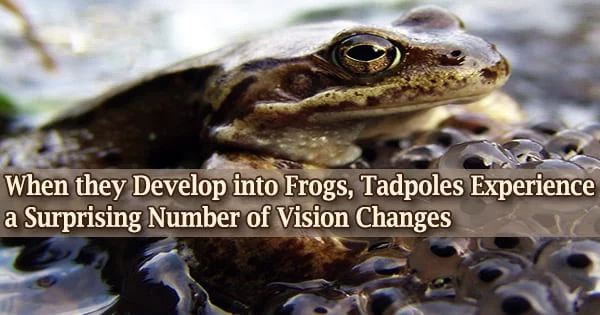Tadpoles have good underwater vision, but what happens when they develop into frogs and spend most of their time on land?
In quest of the solution, scientists from York University and a number of other institutions discovered that tadpoles’ eyes go through an unexpectedly large number of modifications.
Tadpoles undergo a physical transformation on their path to becoming frogs, but how their vision adapts at the molecular level during the several life stages to a noticeably altered environment was unknown.
An international team of researchers, including Assistant Professor Ryan Schott at York University who studies the visual system of vertebrates, looked at the eyes of southern leopard frogs to see if and how they altered.
“Seeing underwater is not the same as seeing on land. The light underwater can have more of a reddish cast, especially in ponds where many frogs live, while the light on land is bluer. The amount of light is also different under water versus on land. Animals that see well in one environment will likely not see clearly in the other. We were interested in finding out what changes occur that allow an animal to go from seeing underwater to seeing on land,” says Schott, who led the study and is the corresponding author.
“The adaptive decoupling hypothesis proposes that animals that have distinct life stages separated by metamorphosis, like caterpillars to butterflies or tadpoles to frogs, might be more able to adapt to their different environments.”
Using RNA sequencing to see the levels of gene expression or which genes were turned on in the eyes, the researchers examined changes in gene expression in the eyes of leopard frog tadpoles and juvenile frogs.
Seeing underwater is not the same as seeing on land. The light underwater can have more of a reddish cast, especially in ponds where many frogs live, while the light on land is bluer. The amount of light is also different under water versus on land. Animals that see well in one environment will likely not see clearly in the other. We were interested in finding out what changes occur that allow an animal to go from seeing underwater to seeing on land.
Assistant Professor Ryan Schott
Microspectrophotometry was also utilized to determine if the eyes’ photoreceptor cells were more sensitive to redder or bluer wavelengths of light at various stages of development.
It is thanks to these photoreceptor cells that animals, including humans, are able to see. These cells transmit light signals from the retina to the brain. What they found surprised them.
“The difference in the gene expression levels that we found in their eyes across the life stages was much higher than expected and a high proportion of them are genes that are directly involved in vision, which was an exciting result,” says Schott.
They discovered that 42% of the genes in tadpoles’ eyes altered or had differential expression when they turned into frogs.
The group, which also included scientists from the Smithsonian Institution, Cornell University, The Natural History Museum in London, the California Academy of Sciences, and the University of Texas at Arlington, discovered that the genes that regulate spectral sensitivity and lens composition, as well as visual function and development, changed the most.
In contrast to the redder light environment of the freshwater habitat they live in as tadpoles, the eyes of tadpoles had evolved and adapted to see better in a bluer light environment as they converted into a juvenile leopard frog living and seeing on land.





